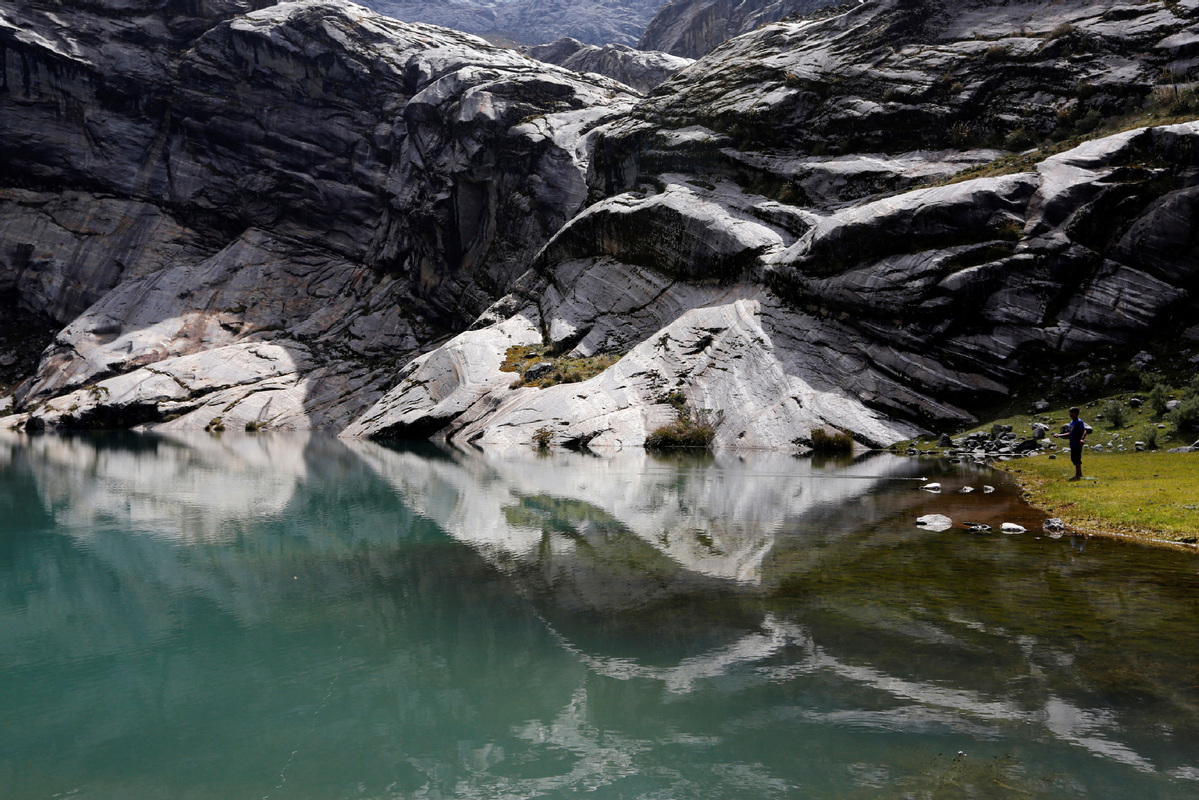Alarm sounded over Peru's glacier melt
By SERGIO HELD and GERMAN SANCHEZ in Bogota, Colombia | China Daily Global | Updated: 2023-12-21 10:29

Over the past six decades, Peru has lost more than half of its glacier surface, with as many as 175 glaciers becoming extinct. This loss is significant for the country and the global climate, and is a visible example of the climate change impact.
"Between 1962 and 2020, Peru lost about 56 percent of its glacier coverage. This means that over half of the country's water reserves in the form of glaciers have been drastically reduced over 58 years," said Jesus Gomez, glacier research director at the National Institute of Research on Glaciers and Mountain Ecosystems, or Inaigem, an entity under Peru's Ministry of Environment.
Peru is home to about 70 percent of the world's tropical glaciers, which are found in the Andes Mountains. These glaciers are a vital source of water for agriculture, drinking water and hydropower. They also play a significant role in regulating the climate and providing habitat for many plants and animals.
"Peru is home to the largest expanse of tropical greenery in the world … This concentration of tropical greenery has fostered communities that depend heavily on the life-sustaining waters flowing from the mountains. The retreat or loss of glaciers, therefore, poses a significant threat to the availability of water, not only for drinking but also for other essential uses such as agriculture and electricity generation," Gomez said.
The loss of glaciers in Peru is due to a variety of factors, including rising global temperatures, changes in precipitation patterns, and increased human activities in the mountains. Rising temperatures are causing glaciers to melt at an alarming rate. Changes in precipitation patterns, meanwhile, are leading to a decrease in snowfall, which is further contributing to glacier loss. Human activities, such as mining and deforestation, are also putting additional stress on glaciers.
"Climate change has been accelerating the process of deglaciation and generating a series of impacts," Francisco Medina, director of research in mountain ecosystems at Inaigem, said.
"Obviously, in the future, it means a reduction (in freshwater). Since the state began to monitor the glaciers in the country, it has been documenting and validating this process."
The decrease in water availability is a genuine problem for Peru, which is already a water-stressed country. The loss of glaciers is also leading to changes in the country's climate, making it more extreme and unpredictable. This is having a negative impact on agriculture and tourism.
The loss of Peru's glaciers is a major concern in regard to global climate. Glaciers play a key role in regulating the climate by reflecting sunlight and storing water. When glaciers melt, they release this stored water, which can contribute to sea level rise. The loss of glaciers is also leading to changes in air circulation patterns, which can affect weather patterns around the world.
The writers are freelance journalists for China Daily.
























